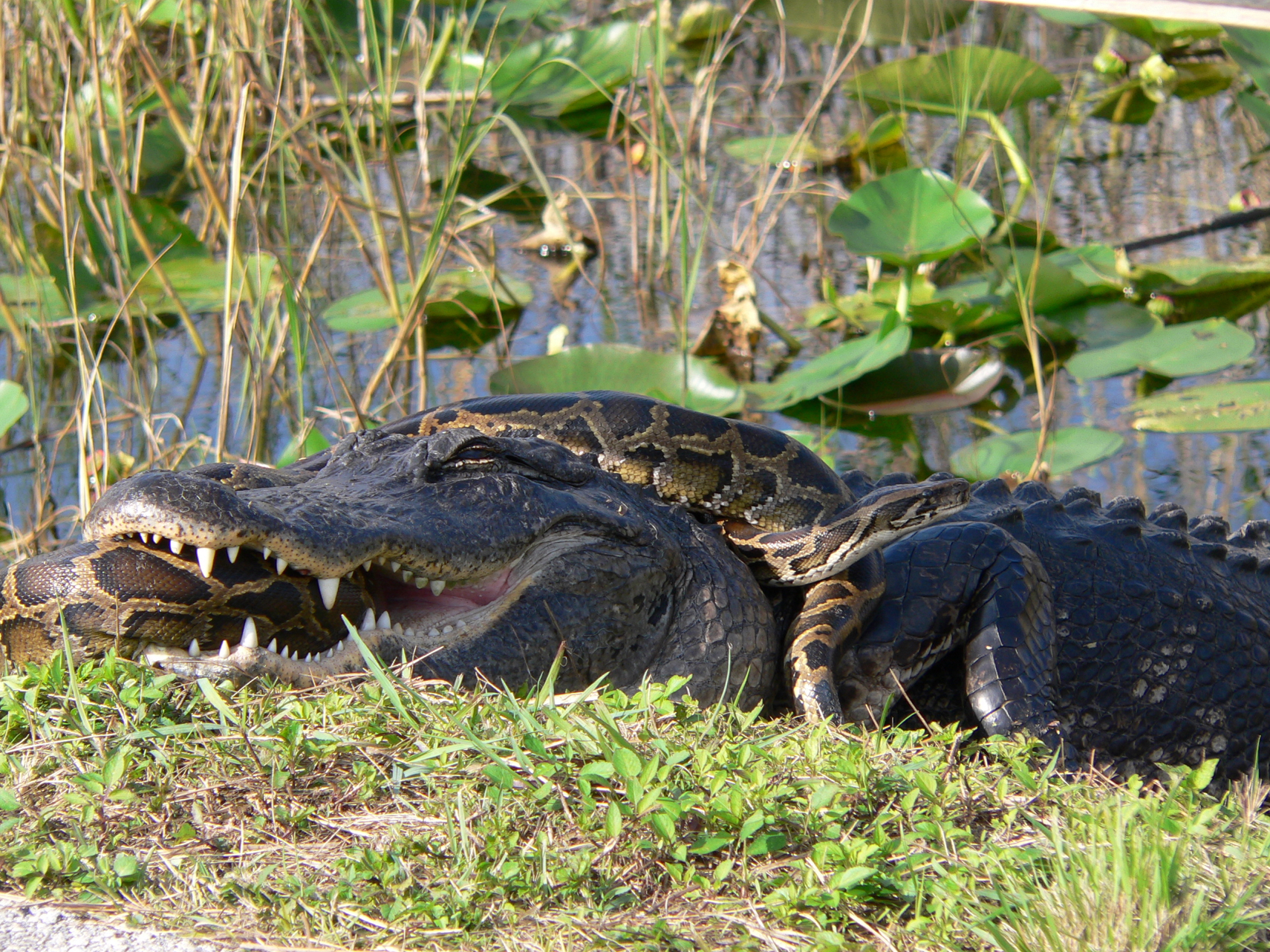The Florida Everglades are like a separate world when compared to the rest of the state. Inside the Everglades you are going to run across swamplands, miles of various waterways and canals, and plenty of natural wildlife. However, the Everglades are also home to some not so native creatures that are quickly taking over the place.
The Burmese python is not only successfully invading the Florida Everglades; it is actually making its way to the top of the food chain. How these creatures got here was thanks to the illegal pet trade. People want these exotic pets, but then either can’t handle them so they let them go in the wild or the snakes find a way to escape and go live in the wild. Now in most areas the invasion wouldn’t be as successful because the climate and food source could not match the Burmese pythons’ needs. However, the Everglades are unique; they provide the perfect habitat for just about any creature on land.
To gain a better understanding of just how invasive the Burmese python has become a 14 year tracking study was conducted and on Tuesday the US Geological Survey published the results. This 14 year study was the longest and largest tracking study done on these animals and found that the pythons are not a threat to people, but they are destroying the native wildlife in the Everglades at an alarming rate.
How the study worked was 19 pythons were caught and released back into the wild after being tagged with a GPS tag. Researchers then used radio technology to track the movements of the pythons over the course of 5,119 days. Based on the information collected via the tags researchers were able to determine that the pythons preferred the coastal and slough habitats in the Everglades National Park, but tree islands were also pretty popular. The home range of the 19 pythons was 3 miles long by 3 miles wide, while the snakes traveled farther distances during the dry season.
In addition to the perfect living conditions, the study also found that breeding and food helped contribute to the overwhelming numbers of pythons. These snakes have plenty of food to eat in the Everglades National Park and are successfully breeding in the wild, virtually unchecked.
One of the best things about this study is it can help wildlife officials deal with this invasive species. By tracking their movements researchers know about their high use areas, which allows wildlife officials to focus their attention when trying to gain control over the species. Knowing where to look can help resource managers devise better strategies to help prevent them from spreading even further.



